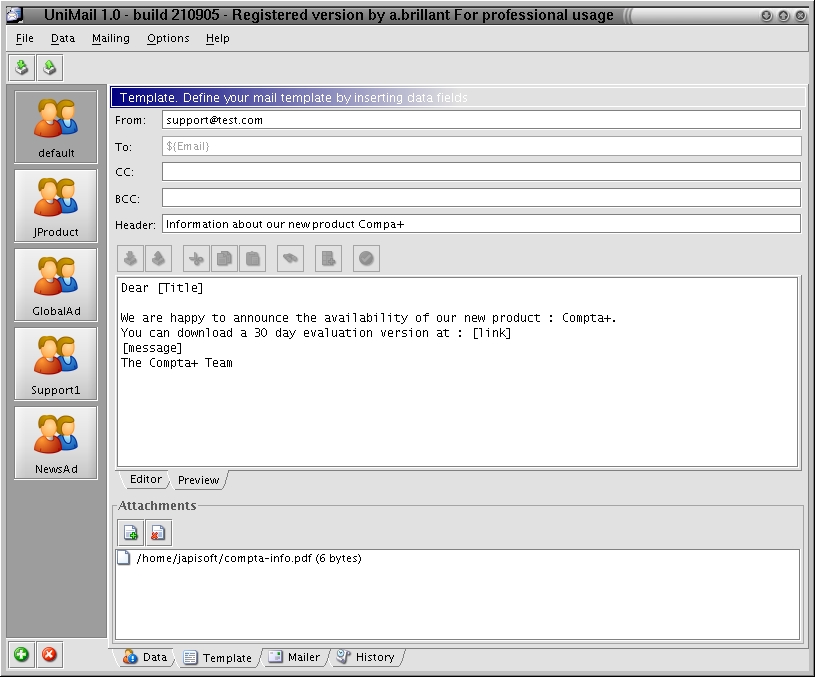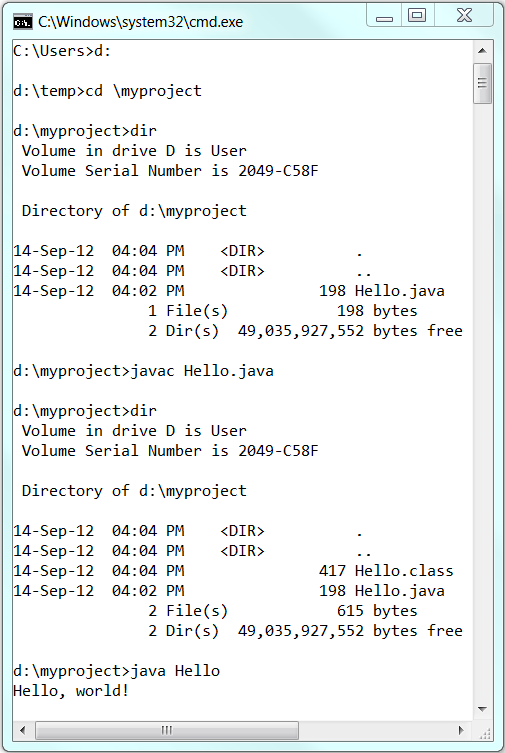Jvm Version 1.8 Mac Download
Installing JRE Version Prior to 8u40 or 8u45 and Later. If you are installing a version of the JRE prior to 8u40, or 8u45 and later, then follow these steps: Download the file. Before the file can be downloaded, you must accept the license agreement.
- Java - Eclipse Not Recognizing JVM 1.8 - Stack Overflow
- Download Java For Linux
- JDK 8 Installation For OS X - Oracle Cloud
- Jre-8u261-linux-i586.tar.gz
- Java Jvm 1.8 Download
- Free Jre 1.8 Download - Jre 1.8 For Windows
This tutorial has everything you need to know about installing JDK 8 on Windows.
If you’re new to Java, I’ll show you how to setup the Java Development Kit.
And if you’re a Java pro? I’ll highlight the needed links that you can use to download the installer.
Bottom line:
If you want to get up and running with Java, you’ll love this tutorial.
Java is a computer programming language that is concurrent, class-based and object-oriented. Java applications compile to bytecode (class file) that can then run on a Java Virtual Machine (JVM).
James Gosling created Java at Sun Microsystems. It is currently owned by the Oracle Corporation.
Consult following posts if you are looking to download and install JDK 1.5, JDK 1.6, JDK 1.7, JDK 1.9 or JDK 1.10.
Java can be obtained from the Oracle Java download page. There are a number of different Java packages available, for this tutorial we will be installing Java Standard Edition (SE) on Windows.

In order to be able to compile Java code, we need the Java Development Kit (JDK) package that comes with a Java compiler. The JDK package also comes with a Java runtime environment (JRE) that is needed to run compiled Java code.
Scroll to the Java SE 8u171/ 8u172 section in the middle of the Oracle Java download page and click on the Download button right below JDK. Then look for the Java SE Development Kit 8u172 section.
Here is the direct link to download the jdk 8u172 installer for Windows 32 or 64 bit.
Accept the License Agreement and pick the correct download for your operating system. In this example, we will use the Windows 64 bit version.
Sign in using your Oracle account (or create a new one) and the download should start. Once the download is complete, locate the jdk-8u172-windows-x64.exe file and double-click to run the installer.
Click Next and on the following screen optionally change the installation location by clicking on the Change... button. In this example the default install location of 'C:Program FilesJavajdk1.8.0_172' was kept. From now on we will refer to this directory as: [java_install_dir].
We will not install the public JRE as the JDK Development tools include a private JRE that can run developed code. Select the Public JRE dropdown and click on This feature will not be available. as shown below.
Click Next and then Close to finish installing Java.
In order for Java applications to be able to run we need to setup a 'JAVA_HOME' environment variable that will point to the Java installation directory. In addition, if we want to run Java commands from a command prompt we need to setup the 'PATH' environment variable to contain the Java bin directory.
When using Windows the above parameters can be configured on the Environment Variables panel. Click on the Windows Start button and enter “env” without quotes as shown below.
Environment variables can be set at account level or at system level. For this example click on Edit environment variables for your account and following panel should appear.
Click on the New button and enter “JAVA_HOME” as variable name and the [java_install_dir] as variable value. In this tutorial the installation directory is 'C:Program FilesJavajdk1.8.0_172'. Click OK to to save.
Click on the New button and enter “PATH” as variable name and “%JAVA_HOME%bin” as variable value. Click OK to save.
Note that in case a 'PATH' variable is already present you can add “;%JAVA_HOME%bin” at the end of the variable value.
The result should be as shown below. Click OK to close the environment variables panel.
In order to test the above configuration, open a command prompt by clicking on the Windows Start button and typing “cmd” followed by pressing ENTER. A new command prompt should open in which the following command can be entered to verify the installed Java version:
The result should be as shown below.
This concludes the setting up and configuring JDK 1.8 on Windows.
If you found this post helpful or have any questions or remarks, please leave a comment.
This page describes how to install and uninstall JDK 8 for OS X computers.
This page has these topics:
See 'JDK 8 and JRE 8 Installation Start Here' for general information about installing JDK 8 and JRE 8.
See 'OS X Platform Install FAQ' for general information about installing JDK 8 on OS X.

System Requirements
Observe the following requirements:
Any Intel-based computer running OS X 10.8 (Mountain Lion) or later.
Administrator privileges.
Note that installing the JDK on OS X is performed on a system wide basis, for all users, and administrator privileges are required. You cannot install Java for a single user.
Installing the JDK also installs the JRE. The one exception is that the system will not replace the current JRE with a lower version. To install a lower version of the JRE, first uninstall the current version as described in 'Uninstalling the JRE'.
JDK Installation Instructions
When you install the Java Development Kit (JDK), the associated Java Runtime Environment (JRE) is installed at the same time. The JavaFX SDK and Runtime are also installed and integrated into the standard JDK directory structure.
Depending on your processor, the downloaded file has one of the following names:
jdk-8uversion-macosx-amd64.dmgjdk-8uversion-macosx-x64.dmg
Where version is 6 or later.
Java - Eclipse Not Recognizing JVM 1.8 - Stack Overflow
Download the file.
Before the file can be downloaded, you must accept the license agreement.
From either the Downloads window of the browser, or from the file browser, double click the
.dmgfile to launch it.A Finder window appears containing an icon of an open box and the name of the
.pkgfile.Double click the package icon to launch the Install app.
The Install app displays the Introduction window.
Note:
In some cases, a Destination Select window appears. This is a bug, as there is only one option available. If you see this window, select Install for all users of this computer to enable the Continue button.Click Continue.
The Installation Type window appears.
Click Install.
A window appears that says 'Installer is trying to install new software. Type your password to allow this.'
Enter the Administrator login and password and click Install Software.
The software is installed and a confirmation window appears.
Refer to
http://www.oracle.com/technetwork/java/javase/downloads/jdk-for-mac-readme-1564562.htmlfor more information about the installation.After the software is installed, delete the
.dmgfile if you want to save disk space.
Determining the Default Version of the JDK
If you have not yet installed Apple's Java OS X 2012-006 update, then you are still using a version of Apple Java 6 that includes the plug-in and the Java Preferences app. See 'Note for Users of OS X that Include Apple Java 6 Plug-in'.
Download Java For Linux
There can be multiple JDKs installed on a system, as many as you wish.
When launching a Java application through the command line, the system uses the default JDK. It is possible for the version of the JRE to be different than the version of the JDK.
You can determine which version of the JDK is the default by typing java -version in a Terminal window. If the installed version is 8u6, you will see a string that includes the text 1.8.0_06. For example:
JDK 8 Installation For OS X - Oracle Cloud
To run a different version of Java, either specify the full path, or use the java_home tool:
For more information, see the java_home(1) man page.
Uninstalling the JDK
Jre-8u261-linux-i586.tar.gz
To uninstall the JDK, you must have Administrator privileges and execute the remove command either as root or by using the sudo(8) tool.
Java Jvm 1.8 Download
For example, to uninstall 8u6:
Free Jre 1.8 Download - Jre 1.8 For Windows
Do not attempt to uninstall Java by removing the Java tools from /usr/bin. This directory is part of the system software and any changes will be reset by Apple the next time you perform an update of the OS.